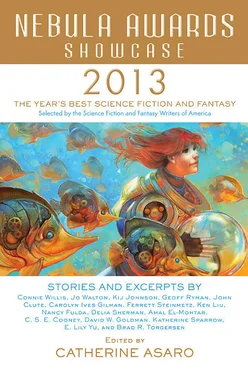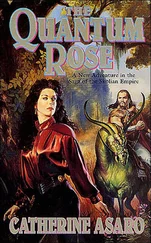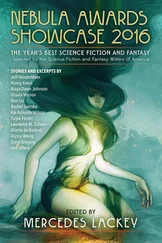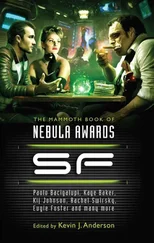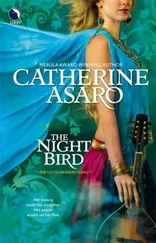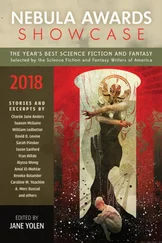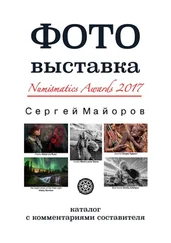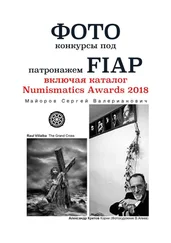I went to John F. Kennedy High School in Richmond, California, which was known at that time for its innovative academic programs. In those days, the Richmond Voluntary Integration Plan was at its height, bringing in students from all over the region. As a result, I attended a school noted for its diversity, a student body that was about one-half African American and the rest a mix of other races, mostly Caucasian, also Asian and Hispanic. That had a marked effect on my new preferences in literature, though I didn’t realize it until years later. I read what my friends and classmates were reading, authors like Martin Luther King Jr. and discussions about the music of Miles Davis. At that point in my life, Ralph Ellison’s The Invisible Man , the story of a young black man dealing with the invisibility conferred by racism, spoke to me far more than H. G. Wells’s science fiction novella “The Invisible Man.”
Rest at pale evening…
A tall slim tree…
Night coming tenderly
Black like me
—Langston Hughes, “Dream Variations”
Another work that stands out in my mind from that time is a book by John Howard Griffin, an American journalist who wrote about racial inequality. In 1959, Griffin darkened his light skin and traveled through the American Deep South as an African American. He took the title of his book about his experiences, Black Like Me , from the poem “Dream Variations” by Langston Hughes. The narrative of a white man experiencing the full force of racism against black Americans left an indelible impression on my young mind.
Echoes of Griffin’s book came to me when I read the excerpt printed here from Delia Sherman’s Norton Award–winning novel, The Freedom Maze . The three chapters concern a young woman sent from 1960s Louisiana back to 1860. The girl, a descendant of the plantation owners who built her ancestral home, is taken for a slave, the by-blow of a white man with a black woman. Not only must she confront the crushing racism of that time, which she comes to realize has survived in more subtle forms into her future world, but she must also live under its weight.
Sherman’s narrator offers a different viewpoint than is usually seen in works of social commentary; this is the story of a teenaged girl, traditionally one of the most misrepresented groups in literary canons. It is ironic that as a sign of our more enlightened times, we can now read stories where the main character undergoing such grueling experiences is a young woman. Is that progress? I would say yes, because it is a statement that the experiences of women are as valuable to our social conscience as those of men.
Every great work of art has two faces, one toward its own time and one toward the future, toward eternity.
—Daniel Barenboim,
Parallels and Paradoxes: Explorations in Music and Society
In graduate school, I began reading science fiction again to relax from the rigors of my doctoral program. This time around, my selections included many authors I hadn’t known before, among them Ursula Le Guin, Marion Zimmer Bradley, Joan D. Vinge, and Anne McCaffrey. I also found new stories by the authors I had read as a child and discovered I could enjoy them again. I was left with the best of speculative fiction, a genre that dares to ask what could be different. Our literature has two faces: one that looks toward the beloved past I knew as a child, but also the face that looks forward, that asks challenging questions and pushes the envelope in almost any way we can imagine, whether it is scientific, fantastic, sociological, cultural, political, or artistic. Most of all, it became the genre of my intellect and of my heart.
I heard the universe as an oratorio sung by a master choir of stars, accompanied by the orchestra of the planets and the percussion of satellites and moons. The aria they performed was a song to break the heart, full of tragic dissonance and deferred hope, and yet somewhere beneath it all was a piercing refrain of glory, glory, glory.
—R. J. Anderson,
Ultraviolet
THE PAPER MENAGERIE
Ken Liu
One of my earliest memories starts with me sobbing. I refused to be soothed no matter what Mom and Dad tried.
Dad gave up and left the bedroom, but Mom took me into the kitchen and sat me down at the breakfast table.
“ Kan, kan ,” she said, as she pulled a sheet of wrapping paper from on top of the fridge. For years, Mom carefully sliced open the wrappings around Christmas gifts and saved them on top of the fridge in a thick stack.
She set the paper down, plain side facing up, and began to fold it. I stopped crying and watched her, curious.
She turned the paper over and folded it again. She pleated, packed, tucked, rolled, and twisted until the paper disappeared between her cupped hands. Then she lifted the folded-up paper packet to her mouth and blew into it, like a balloon.
“ Kan ,” she said. “ Laohu. ” She put her hands down on the table and let go.
A little paper tiger stood on the table, the size of two fists placed together. The skin of the tiger was the pattern on the wrapping paper, white background with red candy canes and green Christmas trees.
I reached out to Mom’s creation. Its tail twitched, and it pounced playfully at my finger. “ Rawrr-sa ,” it growled, the sound somewhere between a cat and rustling newspapers.
I laughed, startled, and stroked its back with an index finger. The paper tiger vibrated under my finger, purring.
“ Zhe jiao zhezhi ,” Mom said. This is called origami .
I didn’t know this at the time, but Mom’s kind was special. She breathed into them so that they shared her breath, and thus moved with her life. This was her magic.
* * *
Dad had picked Mom out of a catalog.
One time, when I was in high school, I asked Dad about the details. He was trying to get me to speak to Mom again.
He had signed up for the introduction service back in the spring of 1973. Flipping through the pages steadily, he had spent no more than a few seconds on each page until he saw the picture of Mom.
I’ve never seen this picture. Dad described it: Mom was sitting in a chair, her side to the camera, wearing a tight green silk cheongsam. Her head was turned to the camera so that her long black hair was draped artfully over her chest and shoulder. She looked out at him with the eyes of a calm child.
“That was the last page of the catalog I saw,” he said.
The catalog said she was eighteen, loved to dance, and spoke good English because she was from Hong Kong. None of these facts turned out to be true.
He wrote to her, and the company passed their messages back and forth. Finally, he flew to Hong Kong to meet her.
“The people at the company had been writing her responses. She didn’t know any English other than ‘hello’ and ‘goodbye.’”
What kind of woman puts herself into a catalog so that she can be bought? The high school me thought I knew so much about everything. Contempt felt good, like wine.
Instead of storming into the office to demand his money back, he paid a waitress at the hotel restaurant to translate for them.
“She would look at me, her eyes halfway between scared and hopeful, while I spoke. And when the girl began translating what I said, she’d start to smile slowly.”
He flew back to Connecticut and began to apply for the papers for her to come to him. I was born a year later, in the Year of the Tiger.
* * *
At my request, Mom also made a goat, a deer, and a water buffalo out of wrapping paper. They would run around the living room while Laohu chased after them, growling. When he caught them he would press down until the air went out of them and they became just flat, folded-up pieces of paper. I would then have to blow into them to re-inflate them so they could run around some more.
Читать дальше
